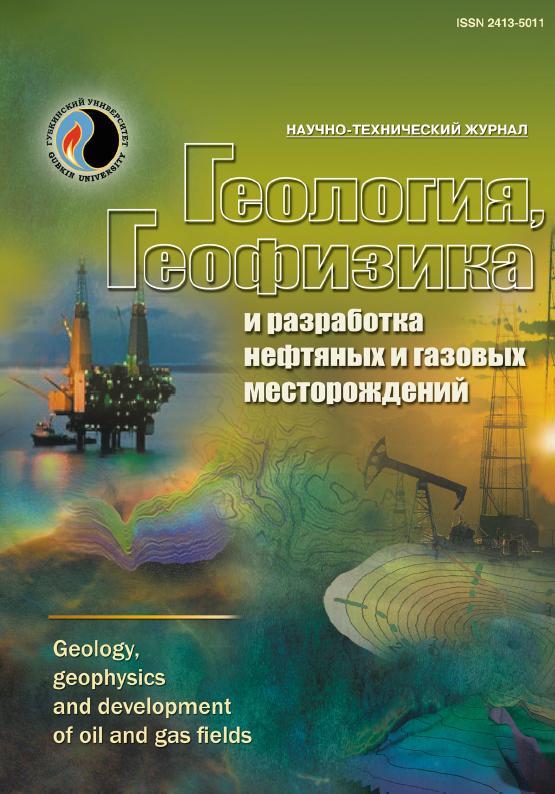Study of thickening additives influence on the efficiency of carbonate formations acid treatment
UDC: 622.276.63
DOI: 10.33285/2413-5011-2022-3(363)-60-65
Authors:
SENTEMOV ANDREY A.1,
DORFMAN MIKHAIL B. 1
1
1 Northern (Arctic) Federal University named after M.V. Lomonosov, Arkhangelsk, Russia
Keywords: lignosulfonate, hydrochloric treatment, reaction rate, permeability, core, carbonate reservoir
Annotation:
The use of thickening additives in acid treatment compositions solves several problems. The reaction rate slowdown due to thickening additives use allows the composition to penetrate deeper into the formation and maintain acid capacity. The compositions high viscosity increases the coverage ratio of the bottomhole zone by acid treatment. Thickening of additives high concentration in compositions facilitate the selective isolation of highly permeable formation zones and the creation of new highly permeable channels.
In the course of the work, acid treatment of the bottomhole formation zone was simulated using the laboratory core study unit. The oil filtration direction from the reservoir to the well and the acid solution from the well to the reservoir were taken into account. Acid solution with addition of sodium lignosulfonate was chosen as a thickening agent. Permeability values for oil filtration before and after the treatment were determined. The results were compared with the data obtained during the acid treatment by hydrochloric acid solution without additives.
According to the results of the work, it was found that the addition of lignosulfonate reduces the rate of the chemical reaction between the acid and carbonate substances, and significantly increases the permeability due to the formation of new highly permeable channels.
Bibliography:
1. Dorfman M.B., Sentemov A.A., Belozerov I.P. Izuchenie reologicheskikh svoystv i reaktsionnoy sposobnosti kislotnykh rastvorov s zagushchayushchimi dobavkami // Izv. vuzov. Neft’ i gaz. – 2021. – № 1. – S. 40–54.
2. Fredd С.N., Fogler H.S. Optimum conditions for wormhole formation in carbonate porous media: Influence of transport and reaction // SPE Journal. – 1999. – Vol. 4. – № 3. – Pp. 196–205.
3. An overview of chemical enhanced oil recovery: recent advances and prospects / A.O. Gbadamosi, R. Junin, M.A. Manan, A. Agi, A.S. Yusuff // International Nano Letters. – 2019. – Vol. 9. – Pp. 171–202.
4. Crowe C. Acidizing composition // US Patent № US3779916A. – 1971.
5. Enrique A. Methods for acidizing a subterranean formation using a stabilized microemulsion carrier fluid // US Patent № 9670399B2. – 2013.
6. Carpenter N.F. Acidizing a petrolific formation // US Patent № US3233672A. – 1966.
7. Dorfman M.B., Sentemov A.A. Vliyanie fil’tratsionno-emkostnykh svoystv prizaboynoy zony plasta na effektivnost’ kislotnoy obrabotki // Izv. Tomskogo politekhnich. un-ta. Inzhiniring georesursov. – 2020. – T. 331. – № 2. – S. 124–130.
8. Sostav dlya kislotnoy obrabotki priskvazhinnoy zony plasta (varianty). Patent RF № 2679029; opubl. 02.05.2019, byul. № 10.
9. Kalfoglou G. Conformance improvement in hydrocarbon bearing underground strata using lignosulfonate-acrylic acid graft copolymer gels // US patent 6186231 B1. – 2001.
10. Compound for receiving hydrochloric acid in inactive form // US patent № RU2230186C2. – 2004.
11. Subrata G., Borkha D. Use of an effluent for enhanced oil recovery // Indian Journal of Chemical Technology. – 2012. – Vol. 19. – Pp. 366–370.
12. Kadet V.V., Maximenko A.A. Determination of relative permeabilities using the network models of porous media // Journal of Petroleum Science and Engineering. – 2000. – Vol. 28. – № 3. – Pр. 145–152.

